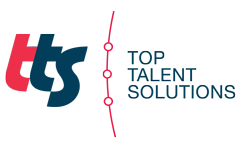
It has long been recognised and accepted that creativity and innovation are essential in driving the change that organisations require to obtain a competitive advantage. Experts in the field of organisational behaviour indicate that organisational competitive success hinges on the effective management of innovation (Nonala & Kenney, 1991). Other experts concur that companies that are effective at rapidly bringing innovative new products and services to the market are those that have gained a huge competitive edge in today’s business world (Ostrenga, Ozan, McIlhattan, Harwood, 1992).
Regarding organisational success and innovation, Deming (1993) goes as far as saying that organisations that innovate will take over the market. As such organisations are finding it critical to recruit candidates who have the potential to innovative.
Dean (n.d.) defines innovation as a process by which new information is created and is developed into a product that fulfils a useful function. Innovation therefore requires creativity. Carr and Johansson (1995) note that while it is the process of innovation that transforms new information into useful applications that lead to change and improvement, it is the process of creativity through which ideas and alternatives are generated.
As organisations look to gain a competitive edge, they look to identify individuals who are creative and have the potential to innovate however; measuring creativity has proven to be a challenging task. One of the challenges lies in that creativity as a concept, is hard to measure. Tests of creativity that have been used in the past have commonly measured creativity by looking at problem solving in which a single correct answer is sought. This in essence goes against what creativity is as once the test taker knows the correct answer creativity is no longer measured but it is the ability to remember the correct response that is measured (cut-e group, 2014). On the other hand, tests that have been more successful at measuring creativity are those which have allowed for the generation of ideas and images rather than relying on problem solving as an indicator. Although these were better measures, these tests are labour intensive and their nature seldom allows for an online administration.
As technology advances, one of the leading providers of assessments tools sought to conduct extensive research into what works in measuring creativity in online assessments. The outcome of this research resulted in the development of an online creativity test called sparks. According to the assessment provider cut-e, sparks is the first test capable of assessing creativity in a valid, reliable and practical way.
In this test, the test taker’s task is to produce a number of images using different shapes and objects and then give these images specific titles. To check that the image titles are in line with the created image, sparks uses artificial intelligence components that interface with Google to count the hits that individual words and word combinations deliver, this evaluation is equivalent to that of an experienced expert.
These technological trends are making it easier for organisations to identify individuals who have high creative ability and the potential to innovate and thus improving the organisations potential to gain competitive advantage.
References
Carr, D. K., & H. J. Johansson. (1995). Best Practices in Reengineering. New York, NY: McGraw-Hill, Inc.
Deming, W. E. (2000). The new economics: for industry, government, education. MIT press.
Nonala, I., & Kenney, M. (1991). Towards a new theory of innovation management: A case study comparing Canon, Inc. and Apple Computer, Inc. Journal of Engineering and Technology Management, 8(1), 67-83.
Ostrenga, M. R., T. R. Ozan, R. D. McIlhattan, and M. D. Harwood (1992). The Ernst & Young Guide to Total Cost Management. New York, NY. John Wiley & Sons.
Dean, E.B. (n.d.) Creativity and Innovation from the perspective of competitive advantage [Web log post]. Retrieved July, 2, 2015 from,http://spartan.ac.brocku.ca/~pscarbrough/dfca1stmods/dfc/c&i.html
Cut-e group. (2014). Identifying innovation: A new era of assessment. Retrieved July, 2, 2015 from, http://www.cute.com/fileadmin/user_upload/sparks/Interview_sparks_Identifying_innovation.pdf

